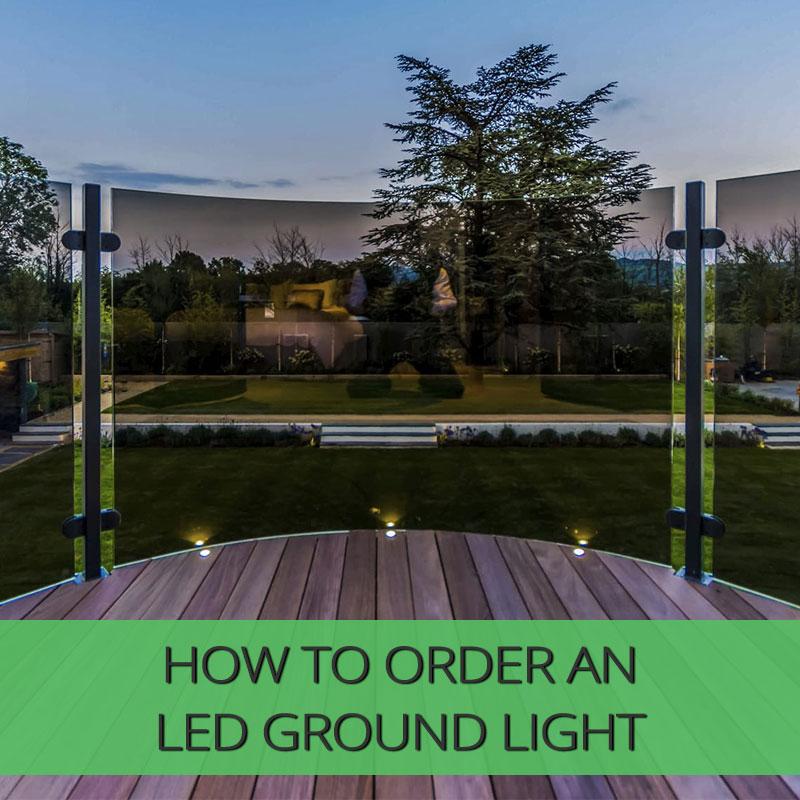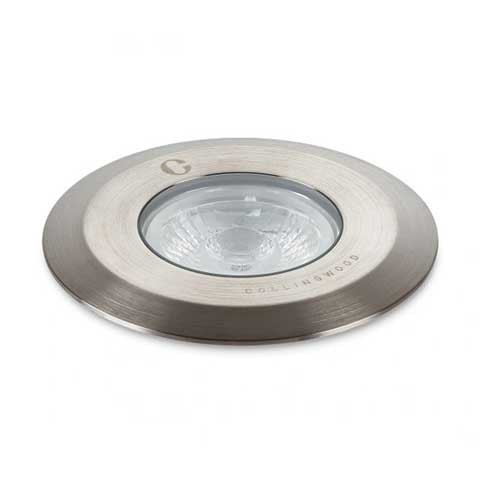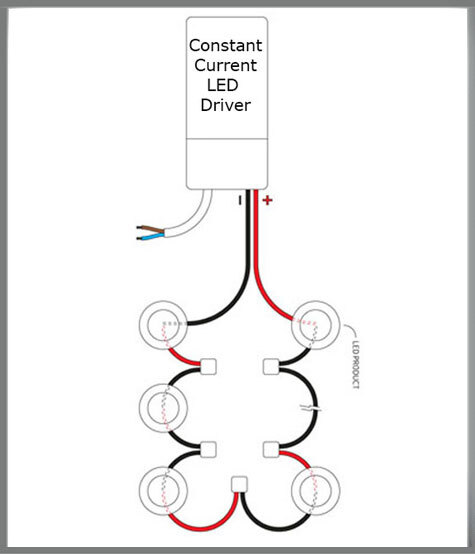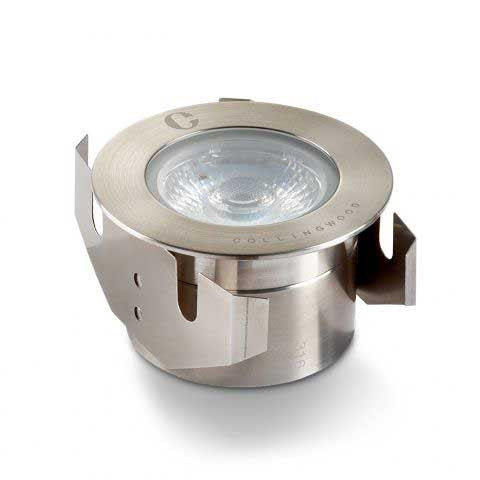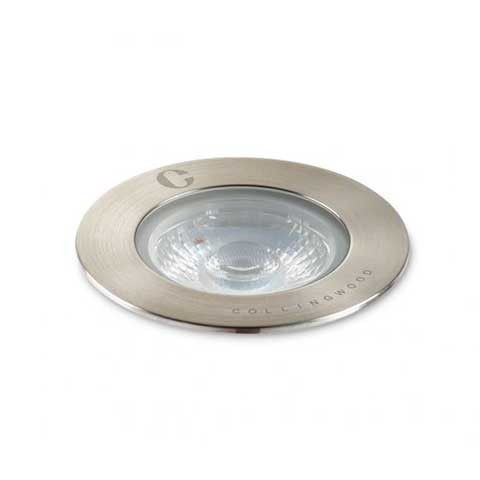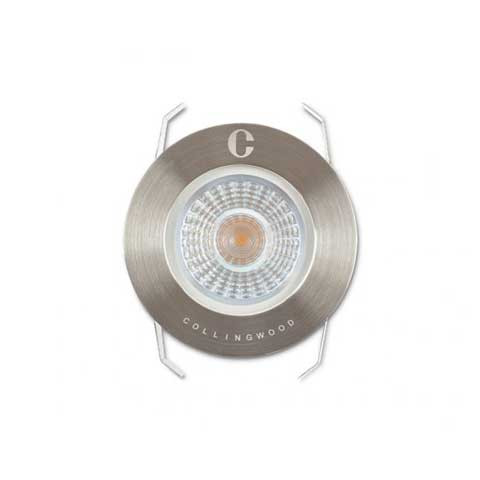How To Order an LED Ground Light
Overcoming a Challenging Task
Ordering LED ground lights can be a challenging task, even more difficult than ordering recessed downlights. This is because greater care needs to be taken with the installation as the cables are often buried underground and everything needs to be totally watertight.
There are many variations of ground lights to choose from, with different input voltage requirements; from mains voltage to low voltage and constant current versions. But which types are better for your garden? Let’s dig deeper into this lighting conundrum...
Mains Voltage Ground Lights 230V
Easier to order as they don’t need an additional LED driver and becoming increasingly popular especially for brighter, higher output versions. But they’re but not as safe as low voltage and one could argue that they’re a little bit risky as they could very easily get completely submersed in water.
You wouldn’t be permitted to install a mains voltage ground light in bathroom zone 0, which is inside the bath, they’d have to be low voltage and SELV (Safety Extra Low Voltage), but outdoors is allowed as its not technically covered by any zonal requirements.
Constant Current Ground Lights
Constant current is generally used in more higher power LED lights. Lots of LED downlights are constant current, even though they say they’re mains voltage they’re fitted with a constant current LED driver.
Constant current has been a popular choice for LED ground lights since their conception. They’re wired in series (shown below) which can have some wiring advantages over constant voltage which is wired in parallel.
Wiring constant current, colour changing LED grounds (or RGB ground lights) is easier to do because you wire from one end to the other, then terminate all of the final wires without needing to loop back around which could be impossible if you’re installing them into stone. While constant current, single colour ground lights do need wiring back around to the LED driver to connect the loop.
The most popular constant current ratings are 350mA and 700mA. You must always be careful when selecting the right constant current LED driver as you need to get the mA rating, the wattage and the voltage range to correctly match all of the lights in your circuit, otherwise they might flicker as they’re not getting enough power, or they could burn out if you overpower them.
Some manufacturers like Collingwood Lighting allow you to use different milliamp ratings for the same ground light or spike light. For example, model number: GL040DNBX40 can be powered with either a 350mA or 700mA supply. When they’re powered by 350mA, the wattage is 2.2 watt, but if they’re powered by 700mA, the wattage is 4.6W. Driving the ground light with more power produces more light.
| lm/W (Driven at 350mA) | lm/W (Driven at 700mA) |
| 136 | 113 |
| Total Lumens (Driven at 350mA) | Total Lumens (Driven at 700mA) |
| 310 lumens | 530 lumens |
Low Voltage – Constant Voltage
Constant voltage ground lights can be identified by their 12V DC or 24V DC supply voltage requirements. Ideally, you’ll want them to have some IP65 to IP68 rated cable connectors attached to them. Then you can plug them in neatly & securely and they’ll all be connected back to the constant voltage LED driver.
Plug & play decking lighting kits do serve a purpose and are a popular choice for garden outdoor lighting installations due to their low cost and ease of installation, but their light output levels are very low compared to proper LED ground lights.
Dimmable Ground Lights
You can also order dimmable LED drivers that allow you to fine tune your ambiance or even set scenes with smart lighting systems such as Lightwave. This wouldn’t be the case with mains voltage alternatives unless they’re dimmable to begin with – but I haven’t seen any of these available on the marketplace just yet.
Colour Changing Ground Lights
Colour changing ground lights such as RGB (Red, Green & Blue), RGBW or RGBWW which is colour changing + cool white 4000K, or + warm white 3000K are dimmable as standard. You do the dimming with the same controller that you change the colours with. RGBW or RGBWW provides you with the best of both worlds, the multitude of colour changes for mood and feature lighting as well as the true white light for ambient lighting.
Which LED Driver?
Here are some golden rules to follow when selecting the right LED driver:
- Match constant voltage lights with constant voltage drivers and constant current drivers with constant current lights…But some colour changing constant current lights can be powered from a constant voltage LED driver when a receiver or repeater is used.
- Check the voltage requirements match as they could be 12V DC or 24DC.
- Check the mA ratings match as they could be 350mA or 700mA.
- Go with the manufacturer’s recommendations, when possible. If you run into any wiring difficulties on site, you’ll be able to get technical support from one place about all of the components you’ve used.
- Don’t go over the maximum wattage load of the LED driver. If you’ve got 10x 3 watt ground lights, the driver needs to be capable of carrying over 30 watts of load.
- Consider the voltage drop for longer runs. Also known as ‘Volt Drop’, which is when you lose voltage when your lights are further away from the power source. The voltage drops out slightly through cables at approximately 0.6V per metre and more so through the lights themselves. This is a common problem with longer LED strip tape installations, and it just needs some extra planning to avoid it from happening. Sometimes you need to use a 36V LED driver with a constant current LED driver and receiver.
- If you’re mounting the LED driver outside, closer to the lights you may want to consider a water and dust resistant option which is rated at IP65 to IP68. These fully sealed products don’t necessarily need to be stored inside an electrical enclosure.
Price Range
LED ground lights range very widely in price, even more so than downlights, from cheap decking lighting kits to expensive high output stainless steel ground lights.
If you were to compare a cheap LED decking light in one hand compared to a Collingwood ground light in the other, you’d immediately feel the substantial build quality and have a better understanding of the difference. The materials and LED chip types that are used also play a part as does guarantee periods and life expectancy. The brightness of a decking light would be around 5 lumens compared with the impressive 530 lumens of the Collingwood GL040DNBX40 which also features a cutting-edge single point source LED chip which is a fancy type of COB (Chip on Board) LED.
Ultimately you get what you buy for, if you buy cheap you often buy twice as the guarantees they come with are too short and aren’t worth the paper they’re written on meaning you’ll have to purchase replacements when they fail. While a premium quality Collingwood LED ground light comes with a 7-year guarantee period. Collingwood can offer longer guarantee periods because they have confidence in their product quality; knowing that providing you’ve installed them correctly, they’re very unlikely to fail.
Lighting Positioning
You could have lots of smaller lights (also known as LED marker lights) dotted around your garden or you could have bigger lights placed further apart. It does depend on how bright you want it to be and if you’ve got any other lights that are contributing to your design.
You might want to highlight certain plants, trees or areas of your garden and compliment the design with some LED spike lights. An LED spike light is basically a ground light on a stick. It has cable connected to it and the spike is inserted into the ground to keep it firmly in position.
If you're illuminating specific objects rather than larger areas, you should consider tighter beam angles which will produce a more narrow but intense beam of light, or mix narrow and wider beam angles throughout your garden. If you're positioning them close to a wall, then a narrow beam works nicely, shown below:

Submersible Lighting for Ponds
If you want to illuminate your pond or a water feature, then you’re certainly going to need low voltage lights that are also IP68 rated. The lights are going to be permanently submersed in water and need to be up to the task, the last thing you want is for them to fail and have to replace them in the middle of winter when its freezing because they’ve leaked water.
Pathways & Driveways
If you want to create a welcoming entrance to your lavish stately home that wows guests and onlookers, then higher power ground lights that you can drive your vehicle over or walk over would be a great option. If you’ve got a small more modest pathway, then smaller LEDs of around 1 watt could be used. You can incorporate some low-level LED wall lights with a downward lighting effect to illuminate your steps in style.

Colour Temperature Considerations
In the very early days of LED lighting, the 4000K cool white (also known as neutral white to newbs) option was the most popular and often the only choice for an outdoor light, but many consumers now appreciate the warmer, cosier lighting option of 2700K. It does depend on the function of your garden and the type of atmosphere you want to create. Think about the times of night that you’re actually going to use them. Do you want a nice and bright, clear, yet clinical lighting effect or a more romantic and relaxing extra warm white feel?
Other Considerations
If you’re installing ground lights into solid paving stones, you’ll need some installation sleaves to install them into. Then you can connect the cables underground in some conduit to protect them. Connecting the small cables can be tricky as space will be tight and it all needs to be totally water resistant ready for the rainy season, which is every week if you live in the UK. These handy little weatherproof junction boxes from Hylec are IP67 rated and come with screw-less connectors built in.
You can also consider double sealing your installation with some resin gel, just to be on the safe side.
Project Pricing & Lighting Design
If you need help with your project, get in touch with us and we can provide you with a lighting design and project based quotation, to help you bring your garden to life all year round.
Phone the experts on: 01706 521188 or email: [email protected]

